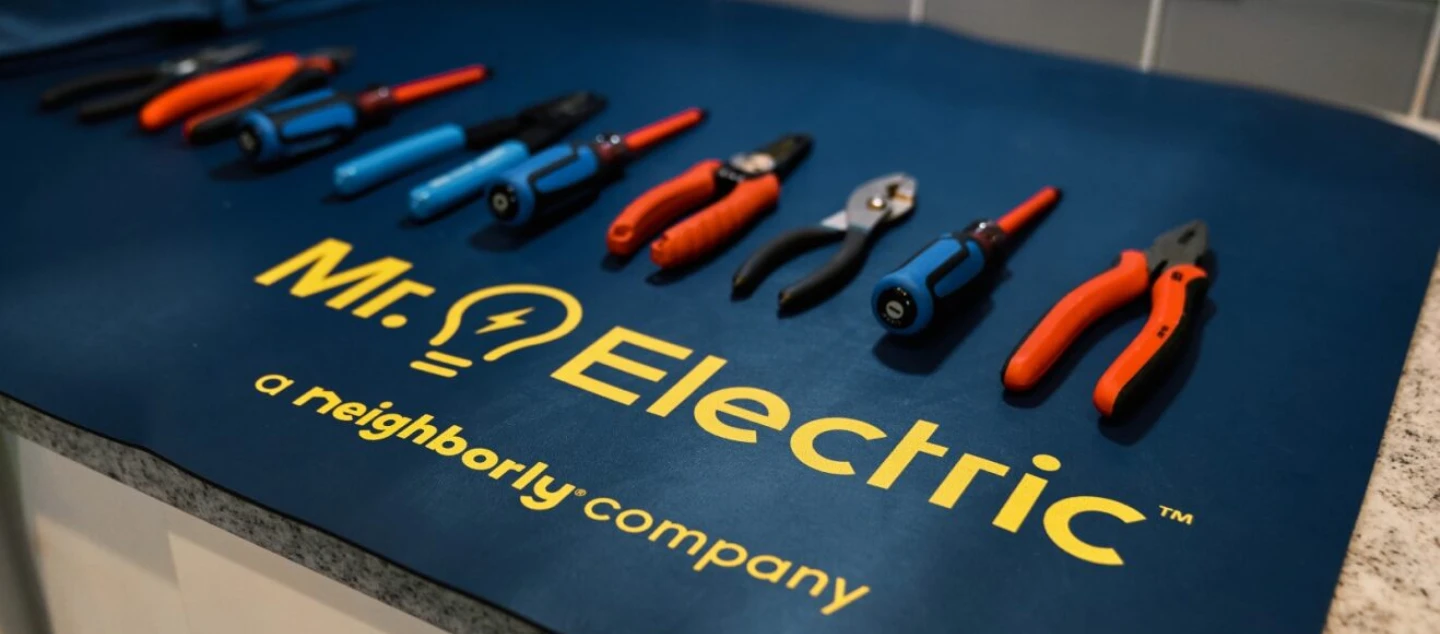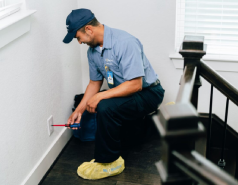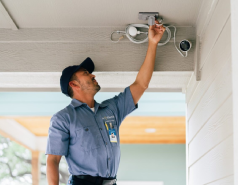Carbon monoxide (CO) is a colorless, odorless, as well as tasteless gas that is produced when potential sources of carbon monoxide-containing fuels, such as gasoline, natural gas, oil, and wood, don't burn completely. It is often referred to as a silent killer because it's virtually impossible to detect without proper equipment. Symptoms of carbon monoxide, when inhaled, can cause shortness of breath, headaches, dizziness within minutes, and death within a few hours. These symptoms are experienced in such a short period of time and can be from cooking appliances, furnaces, or gas appliances that have sources of fuel-burning items in a household.
Understanding how a CO detector works is paramount in ensuring the safety of all in your home or business. By monitoring the levels of CO gas in the air and alerting you if they reach dangerous levels. Let’s understand how a CO detector works:
- Sensing Technology: A carbon monoxide detector installation in Colorado Springs is a type of detector that is usually wired into a home and uses a battery backup. It uses one of two primary sensing technologies: biomimetic or electrochemical sensors. In the biomimetic type, a gel changes color when it absorbs carbon monoxide, triggering an alert. Electrochemical detectors use electrodes and a chemical reaction to sense the presence of CO and then produce an electric current proportionate to the concentration of the gas. Both types of sensors usually have electrical wiring with replaceable batteries or solely run with battery power.
- Detection of CO Levels: The detector continuously samples the air for carbon monoxide. If the CO concentration in the air rises to a certain level, the sensing mechanism is triggered.
- Alarm Activation: Once the sensor detects elevated or unsafe levels of carbon monoxide, the detector's built-in alarm system is activated. This can include audible alarm sounds (a loud sound like a siren) and visual indicators (such as flashes of light).
- Alerting the Occupants: When the alarm is triggered, the detector's alarm system alerts the occupants of the building—beeps with flashes of light or chirping sounds. This is a crucial safety measure, as carbon monoxide is odorless, colorless, and tasteless, making it impossible to detect without a proper sensor.
- Response and Safety: Upon receiving the alarm, occupants should follow the recommended safety procedures, which usually involve ventilating the area, leaving the premises, and contacting emergency services if necessary.
- Regular Testing and Maintenance: It's important to test it regularly to ensure the detector is functioning properly. This usually involves pressing a test button to simulate the presence of carbon monoxide and confirming that the alarm system activates, as well as ensuring there is always power to the unit from a fresh battery.
Overall, a carbon monoxide detector installation in Colorado Springs plays a crucial role in safeguarding the occupants of homes, businesses, and commercial buildings from the potentially lethal effects of carbon monoxide gas by providing early warnings when its levels become hazardous.
Your Optimal Safety: Where To Put a Carbon Monoxide Detector?
A carbon monoxide detector installation in Colorado Springs should be strategically placed throughout your home or business to ensure effective monitoring of CO levels. Here are some recommended locations for each unit:
- Near Sleeping Areas: Install a CO sensor near each bedroom to provide early warning if there's a carbon monoxide leak while occupants are sleeping.
- On Each Level: Place detectors on every level of your home, including the basement. This ensures comprehensive coverage, as carbon monoxide is lighter than air and can rise or disperse depending on various factors.
- Near Fuel-Burning Appliances: Install units near fuel-burning appliances like gas stoves, furnaces, water heaters, and fireplaces. These devices can potentially produce carbon monoxide, so having a detector nearby helps monitor any gas leaks.
- In or Near Attached Garages: If your home has an attached garage, place a CO detector near the entrance to the garage. Vehicles are common sources of carbon monoxide emissions that can seep into the living space.
- In Hallways or Common Areas: Consider placing a CO sensor in central hallways or common areas to provide an additional layer of protection.
- Away from Drafts and Obstructions: Ensure you are installing sensors or units away from areas with strong drafts, as airflow can affect their accuracy. Also, avoid placing them near windows, direct sunlight, doors, vents, or fans, as these can interfere with proper detection.
Remember that proper placement is essential to ensure the detector can accurately sense any elevated carbon monoxide levels. Regular maintenance, including testing the detectors and replacing their batteries as needed, is crucial to their effective functioning.
What’s the difference between a carbon monoxide detector installation in Colorado Springs and a replacement detector?
The terms CO detector replacement and CO detector installation refer to two different scenarios related to carbon monoxide sensors:
CO Detector Replacement In Colorado Springs:
A carbon monoxide detector replacement refers to the action of removing an existing carbon monoxide detector that has reached the end of its lifespan, is no longer functioning properly, or is not in prime condition any longer, then installing a new one in its place. CO detectors have a limited lifespan, typically around 5 to 7 years, after which they may become less accurate in detecting CO or cease functioning altogether. Replacing an old or malfunctioning detector with a new one is essential to ensure ongoing safety in your home.
Mr. Elelectric's Carbon Monoxide Detector Installation In Colorado Springs:
CO detector installation refers to the initial setup of a new carbon monoxide detector in a location where one wasn't previously installed. This could be in a newly constructed home, an area of the house that wasn't previously monitored for CO, or simply adding an extra layer of protection by placing detectors in additional areas. Proper installation involves selecting appropriate locations, mounting the detector securely, and ensuring it is functioning correctly.
Both of these services are vital to maintaining a safe living environment and ensuring that your home or business is adequately protected against the dangers of carbon monoxide.
Mr. Electric Is Your Expert In Carbon Monoxide Detector Installation In Colorado Springs
Mr. Electric is a franchise brand that provides electrical services to residential, commercial, as well as industrial customers. The franchise network is part of the Neighborly brand that focuses on offering a wide range of electrical services, from installation, repair, maintenance, or upgrades for various electrical systems and components.
Mr. Electric of Colorado Springs has a team of licensed electricians who adhere to a high set of standards and guidelines. Our professional electricians offer a wide variety of services, such as electrical repair, electrical panel upgrades, lighting services, generator installation, ceiling fan installation, electrical safety services, and more. Our goal is to provide reliable and professional electrical services with a focus on customer satisfaction and safety.
Whichever electrical service you need, from commercial to residential, our team of licensed electricians can help. Reach out today to learn more or to book your service call. We look forward to helping you upgrade your space.












